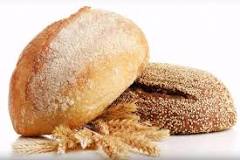By Rabia Tiryaki, MSc, Bastak Instruments
Wheat, which is the most consumed foodstuff among cereal products, has maintained its indispensable place and importance in human nutrition throughout the ages as a strategic product. Cereal products, which are among the indispensable basic needs of people living in all developed and developing countries, meet a large part of the daily energy required by the human body. On the other hand, wheat and flour production activities have once again revealed the economic value of the flour industry and the need of countries in terms of food security with the food crisis that started in 2007 and the global economic crisis that started in 2008 and continues.
Water, ash, protein, gluten, gluten index, gluten, gluten index, Zeleny sedimentation, starch and starch damage are the main chemical and physicochemical properties sought in wheat, one of the most internationally traded agricultural products in history, and flour or semolina produced from wheat.
The amount of starch, which is the main component of wheat flour, has a very important effect on bakery products. Starch forms the dough structure by interacting with other components in the dough. Water absorption, one of the important functional parameters of starch, affects the quality and texture of bakery products. Intact starch granules have the ability to absorb approximately 0.33 times their weight in water, while damaged starch granules can absorb up to their weight in water.
Starch grains are found in the endosperm in a regular and orderly structure between protein networks. However, they lose their structure completely or partially during the milling of wheat. The resulting flour contains damaged starch as well as undamaged starch granules in different proportions. Depending on the grinding system and the adjustment of the rolls, the amount and texture of the damaged starch varies.
The amount of starch damage has become an important quality parameter of interest to all sectors based on the production of cereal products, especially in recent years. It has become a routine analysis in many bread production industries and cereal quality control laboratories after the inevitable effect of starch damage on the final product was demonstrated.
To obtain dough of suitable consistency, the absorption of flours containing excessively damaged starch must be reduced. Excessive starch damage reduces bread volume and affects bread quality by deteriorating the properties of the bread. For good bread making, the flour to be used must contain a certain level of damaged starch. Excessive increase in this ratio reduces the ability to hold gas when there is not enough gluten to cover the excess surface area, and affects the fermentation process very negatively.
For the pasta industry, the amount of damaged starch has an important place in quality parameters. During pasta making, damaged starches constitute a substrate for amylase. They break down and increase the amount of substance passing into the cooking water and cause turbidity. In the pasta industry, semolina, which is a milling product with low starch damage, is preferred.
For the biscuit industry; soft grain structure, lower protein and higher starch ratio constitute the appropriate quality feature. The amount of starch damage affects the breakage rate of biscuits. In the biscuit industry, semolina and flour are used as grinding products with low starch damage.
The amount of damaged starch has a direct relationship with enzyme activity. Alpha and beta amylase enzymes in wheat can only break down damaged starch. Considering that different products are obtained by utilizing different properties of wheat fractions in different ways in wheat processing, it is essential to determine the optimum damaged starch property to produce the product under optimum conditions.
Considering that the quality parameters for the millers who process wheat firstly are flour yield and high grinding quality; the amount of damaged starch, which will constantly change due to factors such as the distance adjustments of the rolls used in flour production, various pulping rate in the raw material during production, annealing amount, annealing time, aging of the rolls, heating of the rolls, roll revolutions, sample flow amount, should be kept under control by continuous testing during production.
Instead of long and difficult analyses to determine the damaged starch value, Bastak 15000 SDCheq analyzes the amount of iodine absorbed by starch granules with a very small amount (1 g) of sample using electrochemical amperometric method. It can determine dough fermentation conditions, dough water absorption, dough rheological properties, dough baking performance, aroma formation of end products, standard flour production, biscuit breakage rate, and prevention of roll aging.
Bastak 15000 SDCheq performs the analysis in five stages. In the first stage, the analysis solution is automatically brought to the world standard temperature of 35°C. In the second stage, the iodine content of the analysis solution is measured and the solution color changes from transparent to yellow. In the third step, the analysis sample is automatically poured. In the fourth stage, the amount of iodine absorbed by the starch granules is measured and the solution turns black. In the final stage, the high-resolution touchscreen displays the damaged starch value in %AI in current and other special units (UCD, UCDc and Farrand). SDCheq is self-calibrating and self-cleaning before each test and complies with AACC 76-33, ICC No.172, AFNOR V03-731 standards.







